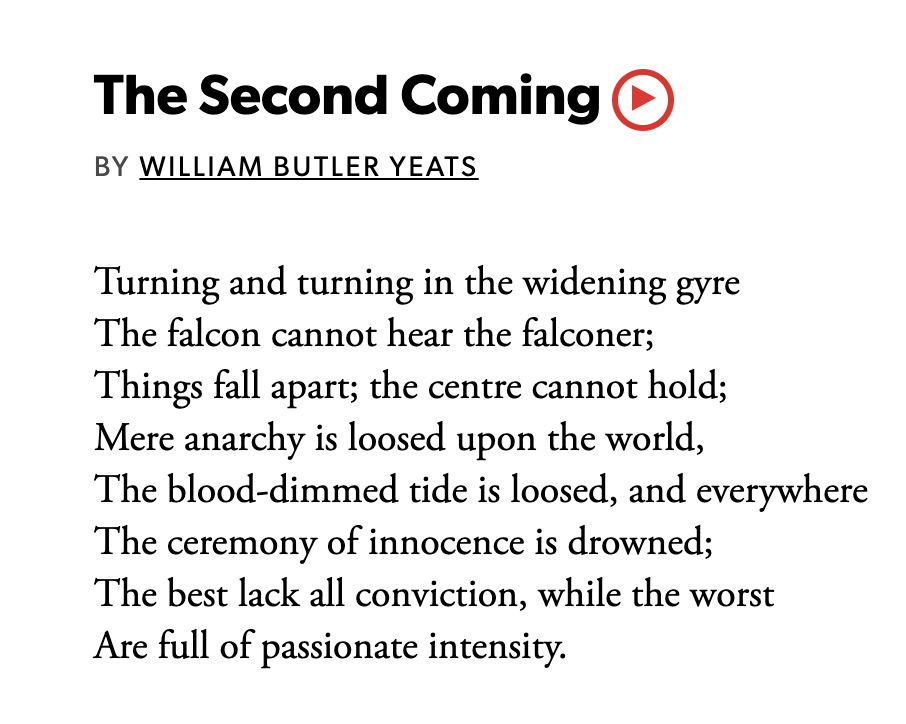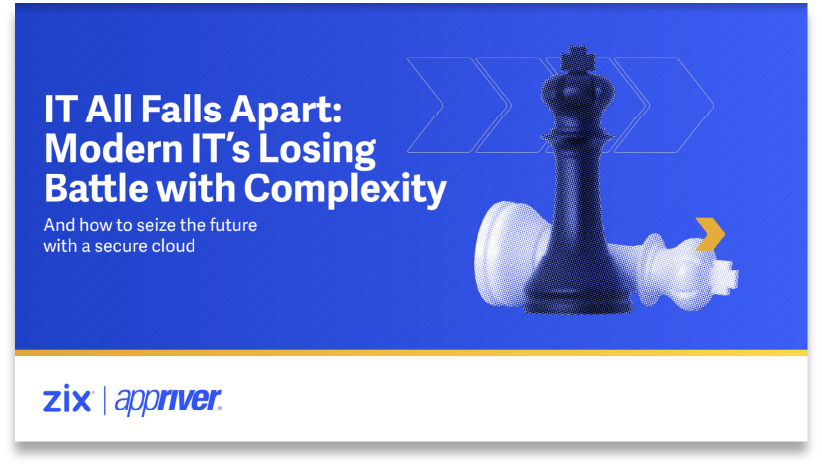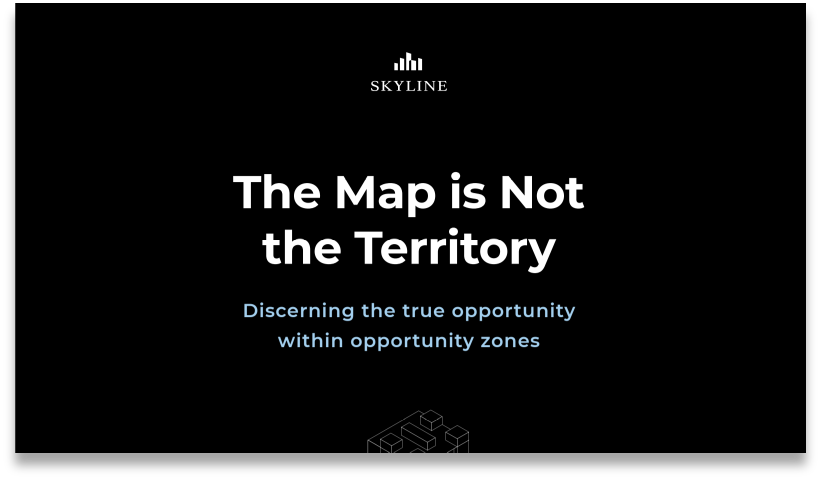Several years back, I listened to a podcast where I heard a six-word quote that contained an idea I instantly loved. I planned to look it up, but for one reason or another, didn’t.
One year later, while reading a brief for a project about artificial intelligence in real estate, my brain miraculously retrieved that quote. Upon lookup, the fit was uncanny, despite sharing little else, and I promptly employed it for the title of the paper.
The mind is a positively fascinating machine. No quantity of notes, color-coded folders, or delicately-tagged Evernotes could have possibly made that connection, and the brain makes these connections all the time, without effort. It is, I am convinced, proof that there is no such thing as extracurricular reading. If you work in content, life is material.
Today, I share the inspiration behind three client projects I enjoyed immensely, and where the credit is due not to me, but to my subconscious.
1. “Dangerously MisLeading”: a story about procedural baggage
I wrote an ebook for Chili Piper where I drew inspiration from a passage from the book Antifragile.
Nearly every tech company employs a team of meeting-bookers and proto-salespeople known as sales development reps, or SDRs. Yet this role is (sometimes) a vestige of a premodern era, much like the use of rolodexes. With calendaring software of the sort that Chili Piper sells, this role is often not needed. The challenge was to deliver this news lightly.

Nobody wants to hear their job is unnecessary, and luckily, I had a genuinely useful spin on it. Having worked in software sales, I knew that the tasks Chili Piper was eliminating were all the least enjoyable bits. If Chili Piper could save SDRs from hounding people to show up for calls, they could graduate to taking their own calls and practicing real selling—the whole reason they took the job. The question was, how to convey that in a memorable way?
I had my answer as soon as I read the brief. It was an analogy from a book I’d read many years prior—Antifragile, by Nassim Taleb. One passage always stuck with me, in which Taleb describes an allegorical tale of a kooky professor who wakes up every morning to lecture the campus birds on how to fly.
The first class of students knows the professor is nuts. The second class suspects he’s nuts. But the third isn’t sure. After enough classes, his preaching becomes such a fixture of campus life that his sonorous tone and the presence of flying birds are intertwined. The causation is taken as self-evident. When he passes away, there is a mad rush to find a successor to save the birds.
It’s absurdist in the extreme, but ultimately a story about what I termed “procedural baggage”—habits we take with us from job to job without close examination. We repeat things because it’s how things have always been done and rarely ask why. This, to me—the professor and the birds—seemed like a perfect philosophical fit. The use of SDRs is just another idea that needs questioning. On page five of the ebook, you’ll see I offer a very literal homage to Taleb’s tale, and the idea carries through the book.

2. Yeats’ “The Second Coming” as an allegory about INformation technology
I wrote an ebook for Zix titled “IT All Falls Apart” inspired by an iconic poem published in 1920.
Prior to writing this ebook, I had carried around a pun that I dearly wanted to make. I wanted to use “IT”—the abbreviation of “information technology”—to replace the pronoun “it” in a sentence. For a number of years, every time I wrote something even vaguely IT-related, I’d pull out that pun to check if it fit. It never did. Then my wife and I began holding a monthly poetry night with friends where, as a challenge to myself, and at her recommendation, I memorized a Yeats poem, “The Second Coming.”
For those not familiar, the poem is a story about the end of the world and how the forces of chaos spread unencumbered. Falconers lose control over their falcons. A great sphinx creature marches to Bethlehem. A “blood-dimmed tide is loosed, and everywhere / the ceremony of innocence is drowned.” The poem is dark. It is delightfully lucid. Many lines you may already know from popular culture.
Joan Didion’s 1968 collection of essays was titled “Slouching Toward Bethlehem.” In the 1987 film Wall Street, Gordon Gecko’s character shouts, “So the falcon's heard the falconer, huh?” And in 1958 author Chinua Achebe titled his book, “Things Fall Apart.”

Some days after poetry night, I sat down to write an ebook about how IT teams face a tide of chaos. I quickly leapt back up—arms held aloft in silence—I had finally placed my pun.

3. Real estate AI explained in the six words of a mathematician
I wrote an ebook for Skyline AI based on a quote from Alfred Korzybski.
I once heard a six-word quote on a podcast and planned to look it up. You already know this story from my introduction. Here’s that quote: “The map is not the territory.” What Korzybski meant by it was, do not confuse a representation of something with the real thing.
This is true of language itself. All language is a highly imperfect abstraction. If I say “chair,” you and I may both envision something with four legs, but the descriptions will probably diverge greatly. So too with maps. A map is an imperfect representation of the actual territory, and Korzybski was warning his students about putting too much faith in models. When you put too much faith in the “map,” you miss what’s actually there.
This was particularly stirring to me because I once spent a long time on a volunteer search and rescue team practicing map-and-compass navigation. I’d experienced plenty of occasions where mapmakers had erred, or maps were out of date. I’d arrive at the bridge only to find it washed away. I’d approach the field only to discover what appeared flat from an aircraft was in fact an impassably rough thicket of manzanita and poison oak. My brain rejoiced in the quote and kept it, and when I read the real estate project brief, a synapse fired.
The word that probably did it was“map.” The story I was writing was this: Today, most commercial real estate maps are drawn using demographic data from the U.S. Census. The census is only gathered every ten years, and at the time of writing, that map data was nine years out of date.
A lot can happen in nine years. Neighborhoods can turn over. A city like Detroit can lose 200,000 residents. My client’s algorithm provided people in real estate a much more accurate map by infusing theirs with timely insights from alternative data sources like room-share listings and cell phone towers. My job with the ebook was to convince readers beyond the shadow of a doubt that their older maps were not to be trusted. So, gleefully, I cautioned them on the perils of confusing the map with the territory.

See the ebook, as well as the blog version of that podcast where I first heard the quote.
Every story comes from somewhere
The thing I really like about all these ebooks is I deeply believe in their arguments. My clients were kind enough to grant me artistic license, and I got to draw upon stories much more profound than I could ever discover through Google Search alone. They draw from and pay homage to the work of a philosopher, a poet, and a mathematician respectively, and I think it makes for a much more substantive and convincing read.
It’s more fun to write, too. As I’ve written a hundred times and will write a hundred more, B2B need not be boring. Just because most of what you see is dry does not mean that your intellectual pursuits don’t have a place at work. They do—you may simply be the first to try.
¹ Cite: 87% of writers may misuse statistics.




